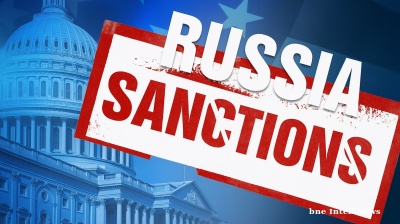The concentration of up to 100,000 men of Russia’s land forces on Ukraine’s borders concentrated the mind. Like the grand old Duke of York, Mr Putin marched his men to the top of the hill and then marched them back again. But why? What is his underlying strategy? Was this a rehearsal for some future invasion, or is something more subtle afoot?
A geopolitical catastrophe
The correct starting point is Mr Putin’s State of the Nation speech in April 2005, which reveals the foundation stone of his thinking in clear terms. In that speech he stated, without equivocation, that “…the collapse of the Soviet Union was the greatest geo-political catastrophe of the century”. I think we can take it as read that he meant “catastrophe [for Russia]”. At the end of 1991, literally overnight, Russia’s western border jumped a thousand kilometres eastwards, it lost several key warm water ports in the Black Sea, its southern border jumped 400 kilometres north, it lost the oil and gas reserves and production of three countries, it lost its dominant position in the Caspian Sea, and finally its Asian border jumped 1,600 kilometres north. For comparison, adjusting the distances for the areas enclosed before and after the change, 1991 is roughly equivalent to the USA losing Florida, North and South Carolina and Louisiana, along with all of its onshore and offshore oil and gas production. You can see what Mr Putin meant.
What does one do after a catastrophe? Rebuild, naturally. But what would that mean to the Kremlin in 2005? What were the set of governing conditions? First, Russia’s military was in a sorry state after half a generation of neglect, resource constraint, strategic withdrawal, an overhang of cold war hardware, doctrine built around a rapid tank invasion of northern Europe, and a collapse in self-belief and morale.
Second, the political class of the “fugitive” republics were in no hurry to return to the Russian fold, preferring to feast on gigantic opportunities for transferring state assets to themselves, and for exploiting state-granted monopolies. While the political class of the fugitive states was learning the ways of kleptocracy the peoples of those republics felt well-off by comparison with their Russian neighbours and cousins, as Russia wrestled with structural reform, government bankruptcy, gang warfare and its own bout of large scale kleptocracy. For several years after 1991, therefore, there was little that Moscow could do about rebuilding.
The first steps in Georgia
It was not until 2008 that Putin made his first baby steps into territorial reclamation, by invading the border regions of Georgia. His target was well-chosen – geographically small, militarily weak, 88% Christian, effectively part of Russia for seven generations (since 1783), comfortably distant from and inaccessible to most of Nato’s members and containing the key pipeline which carries Azerbaijani oil exports around Russian territory. The invasion of Georgia should have been a walkover, but it was not. Instead the war became a painful wakeup call for the state of Russia’s land forces, which proved far from effective. But the war was partially successful in two ways. First, it reclaimed some territory for Russia. Second, it made the point to the other “fugitives” that the West would not fight Russia to prevent Russian restoration of its 1991 borders.
With Georgia under his belt where should Mr Putin go next? Azerbaijan could be quickly ruled out as too provocative to Iran – a state that Russia would rather cultivate than devastate. The Stans are just too big and too Muslim. Belarus was already being cultivated as a quasi-federated state, likely to fall painlessly back into Russian hands once Mr Lukashenko had moved on, or died. The obvious next step was, and is, Ukraine.
How do Russians see Ukraine?
The average Russian’s perception of Ukraine is not widely understood outside Russia. To gain a Russian understanding we need to dig a long way back into history.
Russia as a polity was born out of the Grand Duchy of Moscow, founded in 1283. The Grand Duchy of Moscow in turn was born as a vassal statelet of a polity (the word “state” is too strong) called Kievan Rus, centred on Kiev and neighbouring cities, which had been in existence for ten generations before Russia came along.
The Kievan Rus can trace its own origin story to wandering Scandinavians using large river systems to explore and settle eastwards. Kievan Rus was actually a Viking settlement, dating from about 882. The combination of those origin stories means that Russians see Ukraine not just as Russian but as the very essence and spring of Russian-ism.
The Ukrainian lands failed to remain as the heart of the Kievan Rus because of the Mongols, who razed Kiev in 1240. For five generations after that the lands that are now Russia and Ukraine were effectively a collection of small polities dominated by Mongol hegemony enforced by frequent raids in search of slaves and tribute. Poles and Lithuanians occupied large areas on the western flank of the Rus. The majority of modern Ukraine fell into the Lithuanian sphere, but Russians today see that as a hostile occupation, not a unification.
The centre of gravity of this collection of polities formed around Moscow because the Grand Duchy of Moscow cooperated particularly enthusiastically with the Mongol Khanates. Russia’s existence as a set of fragmented vassal statelets continued until the end of the 1300s, when the Prince of Moscow defeated a Mongol army in 1380 at the Battle of Kulikovo. Even then Russia was not quite a state for another three generations. It took Ivan the Great in the 1470s to take on and either defeat or co-opt a miscellany of duchies and princelings into what looked to us like a single state. The formation of Russia was sealed by Ivan’s defeat of the Mongol horde in 1480.
The Lithuanian slice of the Kievan Rus lands remained under the suzerainty of Lithuania until they were transferred to the kingdom of Poland in 1569. Russians again see this as occupation, not assimilation. The Mongol horde may have been defeated in 1480, but it did not fold its tent and steal away. For the next seven generations descendants of the Horde formed a powerful proto-state east of Russian and Polish lands in the form of the Cossack Hetmanate, whose rule ran from Crimea in the south around the eastern side of Lithuanian/Polish Ukraine and north to the eastern borders of Russian lands. Russians see this too as an occupation.
A few more generations of raiding and slaving had to pass before the three kingdoms of Russia, Poland and the Hetmanate fought a 30-year war, starting in 1657 (with the Ottomans joining in along the way) to decide who owned the heartlands that are now Ukraine. By the end of this war Turkey was down, the Hetmanate out, and Ukraine divided along the Dnepr river into eastern (Russian) territory and western (Polish) territory. Here the border sat until 1784, when an expansive Catherine the Great fought a war to acquire the western half of Polish Ukraine, taking its western borders to their present position. Along the way Catherine took Crimea from the Cossack/Tatar descendants of the Mongol Horde.
For Russians, Ukraine was never an independent state
Russians see this 30-generation saga as a battle for the well-spring of Russianism between Russians, Europeans and Cossacks. The concept of Ukraine as a state, or as a people, just does not appear in that narrative.
This brief history lesson is offered, without apology, because its narrative forms the inner skeleton of how the Kremlin sees the Ukrainian question today. From a Kremlin point of view Ukraine has never been an independent state (apart from a brief post-revolutionary moment between 1918 and 1922, in which several versions of independent Ukraine flashed into and out of existence). The Kremlin’s starting point is that the lands of eastern Ukraine were rescued from Cossacks by force of arms in 1688, and western Ukraine was rescued from Poles by force of arms in 1784. To a Russian, Ukraine is considerably more Russian than, say, either California or Texas are American, or Bavaria is German, or Crete Greek.
What this narrative suggests is that Mr Putin’s underlying agenda is quite simply the re-unification of Ukraine with Mother Russia.
But Moscow has fully accepted the 1991 settlement in law
Nothing in that assertion undermines Russia’s acceptance of the de jure fact that Ukraine became an independent state at the end of 1991, recognised as such by all 193 member states of the United Nations including Russia itself. The task of decoding Russia’s strategy therefore has to reconcile two apparently irreconcilable forces – the legal reality of independence on the one hand, and unification with Russia on the other. It seems to me that the Kremlin, which has rather more respect for international law than many states we could mention, has accepted that in this 21st century it is no longer possible, or acceptable, to move the borders of an independent state by force.
That statement will immediately raise cries of “Crimea! Crimea!”, but bear with me for a moment.
If Mr Putin believes what I think he believes, then what strategy is open to him to re-unify Ukraine with Mother Russia? The answer is clear. Borders may not be moved around by force, but they MAY be changed by the clearly expressed democratic will of the people living within them. Here in Europe we have seen over thirty examples of that happening since 1945 – 28 cases of states voting to federate within the European Union (yes, I know, is it a federation? a union? a cooperation? or what? A good question but not for now); one case of a country voting to leave that union; several cases of voters choosing borders and affiliations after the Yugoslavian collapse; Slovakian voters choosing to leave a union with the Czech Republic; East German voters choosing to reunify with West Germans; Sudanese voters choosing to divide Sudan between north and South; and probably a few more examples that I have overlooked.
I believe that Mr Putin accepts that if he wants Ukraine back inside Russia (probably in some sort of federation) he must somehow get a clear majority of its population to vote for that result.
Acceptance of that thesis renders each Russian act in respect of Ukraine over the past decade clear and logical.
Ukrainians are not so sure
About 40% of Ukraine’s population feel strongly Ukrainian/European with a dash of Polish. This group is concentrated in western Ukraine, in the lands ruled by Poland and Lithuania between the 1380s and 1784, but is also spread throughout the country.
Another 40% of Ukrainians feel firmly Russian. These are concentrated in the lands east of the Dnepr River taken from the Cossack Hetmanate in 1688, but are also spread around the rest of Ukraine. You will not find this split in “ethnicity” data reported in state statistical data (which claims an 83/17 division between Ukrainians and Russians respectively). That is hardly surprising since the people who reported the data have an agenda to de-emphasise Russian ethnicity and to promote Ukrainian ethnicity.
A more revealing data point is use of primary language – 29% of Ukrainians are reported to use Russian as their first language. This figure, too, is probably an underestimate of Russianism. Most Ukrainians are bilingual, making use of first language a choice, and if you are a Russian living west of the river Don then you might well choose Ukrainian as your first language for convenience and a quiet life. As early as 1992 when I was working in Ukraine my O-level Russian was already unpopular anywhere west of the Don.
Between these two ethnic groups sits a large minority of people who could as easily feel Russian as Ukrainian, so long as they can have a quiet, happy, reasonably prosperous life in a secure and peaceful state. At present the balance of opinion in this group, if tested in a referendum, would probably be to remain in an independent Ukraine. Mr Putin’s task, therefore, is to condition the minds of slightly more than half of that “swithering” group to choose federation with Russia over independence, and then to promote a self-determination referendum which would choose federation with Russia.
Pull too hard and the country splits
If Moscow were to pull too hard on Ukraine, perhaps by stoking an escalation in violence with consequent civilian deaths in the Donbas, there is a significant risk that Ukraine would split along a Russian/Ukrainian fault line, either along or to the east of the Dnepr river. That would be a disaster for Russia. The resulting western half of Ukraine would become a strongly European polity with its back to Russia and its face firmly towards the European Union, Nato and the West. Moscow would have no chance at all of persuading this new state to vote to federate with Russia, and Russia’s western border would settle and stabilise along the Dnepr river. Nato membership and representation would duly follow. This the Kremlin would see as a major disaster.
So how can Mr Putin ensure that the whole of Ukraine comes intact into federation with Russia? The task is a simple one, the simultaneous application of carrots and sticks to move the consensus to “federation”.
Carrots for the union
The carrot is easy – Russia’s GDP per capita (in real dollars, not PPP) of $29,000 is more than double Ukraine’s $12,000. Russia’s economy runs on a large reserve of net cash. Ukraine is a permanent debtor state with a weak currency constantly begging for help and favours from richer neighbours. Russian social benefits, pensions, healthcare and housing are all much better than their Ukrainian equivalents. Russia has a prominent role in the community of the leading nations of the world, sharing tables with China, the US, Europe, Iran and India. Ukraine, in contrast, is a problematic marginal country with no world role at all.
Russian armed forces are proud, effective and numerous, and equipped with world-class and world-beating kit. Ukrainian armed forces are modest on land, and largely non-existent in the air and at sea. Modern Russians have national self-respect. Modern Ukrainians do not. Modern Russians have better food, better jobs, better cars and better opportunities than modern Ukrainians. One would have to be an ardent Ukrainian nationalist NOT to feel that life would be somewhat better as part of a federated Russia.
Last week Mr Putin added parsley to the carrot, when he started issuing Russian passports to people “stranded” in the Donbas by the conflict. The implication for the rest of Ukraine is clear – join us in the great Russian party and life will be better. The parsley is subtle – hundreds of millions of people around the world enjoy two passports (the UK has just offered a third of a million Chinese citizens in Hong Kong British ones, with a short qualifying period). Issuing passports to the citizens of other countries is not an act of aggression, but one of inclusion, which Kyiv’s spluttering opposition cannot obstruct.
But the carrot, even with added parsley, is clearly not enough – witness the fact that it has been dangling for the best part of a generation but Ukraine has remained stubbornly independent.
Sticks for independence: stick number 1
The Kremlin therefore also needs a stick. The first choice of stick is Ukraine’s gas supply. Most Ukrainian homes are heated by Russian gas and lit by power generated from Russian gas. Ukraine’s winters are long and cold. Periodic interruptions to the supply of gas along the Brotherhood pipeline, whether for non-payment of bills or for “technical reasons”, hits Ukrainians in their homes and offices, as well as hurting Ukrainian jobs. Since 2008 Russia has therefore periodically reduced or shut off gas supplies to Ukraine for days at a time to inflict sustained low-intensity misery on Ukrainians.
The power of the gas “stick” has always been limited because interruptions to Ukraine’s supply also interrupt onward transmission to Russia’s customers in Europe, and the damage to Russia’s reputation as a reliable supplier is unwelcome. That is why a key part of Russia’s Ukraine strategy is the construction of NordStream, to allow Russia to apply the gas “stick” to Ukraine harder and more often after it comes into operation.
Stick number 2 – the Donbas insurrection
Making those 20% of swithering Ukrainians cold and miserable at home is not enough to swing the balance of opinion. The Donbas insurrection can be seen as a way of increasing Ukrainian pain with an acceptable cost and loss of life (acceptable to Moscow, anyway). The insurrection undermines Ukraine’s economy by soaking up budget into salaries and ammunition and into caring for the million people displaced by the conflict; and by driving a million more energetic and productive Ukrainians into life abroad (many in Russia). These combine to help keep the swithering 20% poorer than their Russian cousins, while also undermining the credibility of the Ukrainian state by showing it up as weak and ineffective. It is important to note here that Russia’s policy in the Donbas is to keep Ukrainian mortality low – nothing stokes up the fires of independence like the killing of one’s children – which is why the levels of violence in the Donbas are as low as they are (with about one Ukrainian death per day, at present). The last thing that Russia wants to see is violence and mortality in the Donbas escalate.
Stick number 3 – Brussels doesn’t care
The Donbas insurrection, too, appears to be “not enough”. Some proportion of the swithering 20% warm their Ukrainian hearts on the idea that Ukraine is essentially a european country (with a deliberate small “e”), and that the European Union needs only time to realise this truth and to decide that it wants Ukraine inside the EU. With one flourish of a pen they see all of Ukraine’s economic problems solved. After accession all will be well – subsidies and grants will shower down from Brussels, the whole of Europe will be open to energetic young Ukrainians wanting well-paid work to the west, remittances will flood home to power economic growth, and Ukraine’s feeble national currency will be replaced by the euro. Mr Putin’s stick is the painful truth that the last thing the Commission wants is to absorb an impoverished, corrupt and indebted economy with severe geopolitical border issues and another 5mn potential immigrant workers.
Stick number 4 – Crimea
Russia’s annexation of Crimea rendered Ukraine’s lack of credibility as a functioning state starkly clear. It also made clear Mr Putin’s view that the opinions of “the people” are key. Yes, the post-annexation Crimean referendum was neither clean nor tidy and has been firmly rejected by the United Nations, but it is equally clear that if Crimea were to carry out a clean tidy referendum today, overseen or even managed by external authorities, a clear majority of Crimeans would vote to remain in Russia.
In spite of that, since it firmly rejects Crimea’s secession, Kiev would find it hard not to include the (mostly Russian) population of Crimea in a larger Ukrainian referendum on federation with Russia. Crimea is a stick that gives twice.
Stick number 5 – beating drums on the border
And so we come to the present, in which half a dozen Russian divisions (the public domain is unsure of how many exactly) concentrated on Ukraine’s northern and eastern borders and in Crimea for a fortnight. If my thesis is correct then an invasion of Ukraine was the last thing on Mr Putin’s mind. I see this as another piece of the psyop campaign aimed at that swithering 20%. The message being sent was this: “Your state is weak, incompetent and corrupt. We could invade at will, and your weak armed forces would be swept aside. The West cares nothing about your fate, and even if it cares it is helpless to intervene, and will not do so. What sort of state would you prefer to live in? One that can protect you properly (using the armed forces that you are now apprehensively watching), or one that cannot? One that has self-respect on the world stage, or one that is a beggar? One that is rich and powerful, or one that is poor and weak? One that can protect its borders and its people, or one that must bow to the desires of its neighbours?” That message may not reach the western media, but it is clear enough to Ukrainians.
If we think about the counter-argument, that Russia has a medium-term plan to invade Ukraine, a quick look at the consequences of an invasion might corroborate my thesis. Russia’s land forces have improved beyond measure since 2008. Today they are well-equipped, well trained and well motivated, and superior to Kiev’s forces in all those respects. Russia would also have air superiority and control of Ukraine’s southern littoral. Russia would also probably have cyber-superiority, allowing it to harass Ukraine’s logistics efforts, while causing widespread civil disruption of power, water and gas networks to distract Kiev’s leadership from the fight and to undermine its credibility.
But even with those superiorities, invading Russian troops would get killed in large numbers, for Ukraine has a large and motivated land army. At a hot-war mortality rate of around 1% of engaged forces per month a three-month campaign would see 3,000 Russian body bags heading back north, and 3,000 grieving families asking why their sons were dead. In all wars the enemy always gets a vote and Ukraine is a large country, so there is no guarantee of a short war – the numbers might grow very much larger.
Modern land warfare is unbelievably destructive – have a look at photographs of Idlib if you don’t agree – so a victorious Russian army would find itself having to run refugee and support programmes for millions of Ukrainians in a devastated civil environment among a population whose attitudes to Russia had been firmly crystallised into opposition, bordering on hatred. In his youth Mr Putin witnessed an extremely painful lesson from the joys of hostile occupation for 10 years from 1980 in Afghanistan, and he will well remember that the tide of body bags from that war played its part in exactly the 1991 catastrophe he is trying to set right.
If (when) Kiev falls to Russian arms there is a strong possibility that Ukraine’s leadership would establish a new base in Lviv – firmly in the European sphere – from where it would seek to rule a smaller, western, Polish, Ukraine with uniform ethnic support. Russia might find itself in occupation of only half of Ukraine, spending frightening amounts of money supporting a devastated economy and displaced population, burying regular consignments of dead Russian lads, all the while being excoriated outside Russia as a rogue state which acts with contempt for international law and human rights.
If Russia had no other option then it might, conceivably, volunteer for this collection of hells. But it does have a choice. Surely a more accurate interpretation of Russia’s military bandstanding is as one more piece of mental conditioning aimed at changing the consensus of that swithering 20%. Once a clear majority of Ukrainians decide that life inside a benign Russian federation would be better than life as an independent state then Moscow’s game is won. The whole of Ukraine would federate with Russia, no-one would die, no money would be spent, no international laws would be broken, and no-one outside the two countries would have any cause for complaint.
It appears to me that that result is only a matter of time.
Opinion
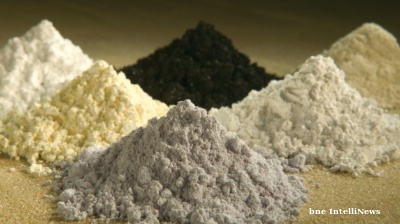
COMMENT: China’s new export controls are narrower than first appears
A closer inspection suggests that the scope of China’s new controls on rare earths is narrower than many had initially feared. But they still give officials plenty of leverage over global supply chains, according to Capital Economics.
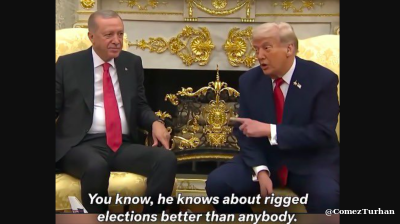
BEYOND THE BOSPORUS: Consumed by the Donald Trump Gaza Show? You’d do well to remember the Erdogan Episode
Nature of Turkey-US relations have become transparent under an American president who doesn’t deign to care what people think.
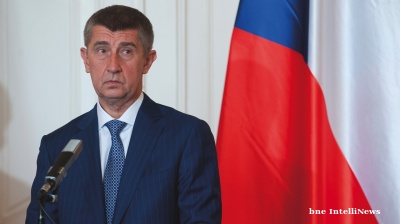
COMMENT: ANO’s election win to see looser Czech fiscal policy, firmer monetary stance
The victory of the populist, eurosceptic ANO party in Czechia’s parliamentary election on October 6 will likely usher in a looser fiscal stance that supports growth and reinforces the Czech National Bank’s recent hawkish shift.
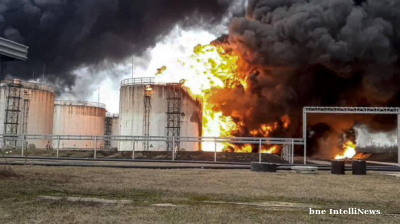
COMMENT: Ukraine's drone attacks on Russian refineries have probably reduced throughput by 30.4%, less than headline figures suggest
Ukraine has been hitting Russian refineries and caused a fuel crisis that has spead across multiple regions. The headline figure is that oil refining has been reduced by 38% since August, but digging into it and the reduction is likely less.
